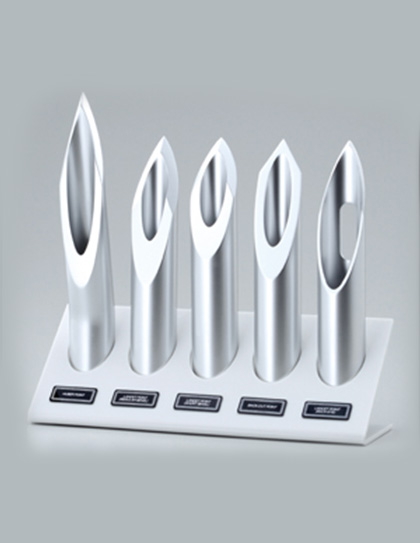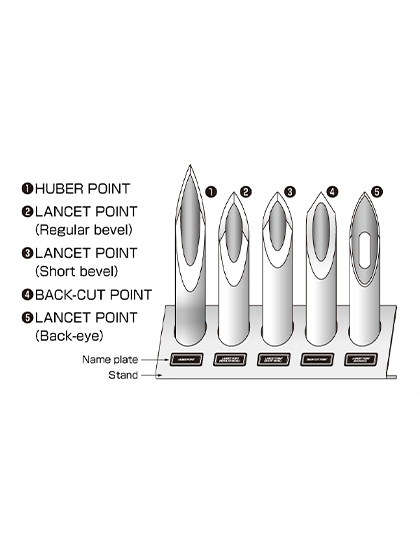EDUCATIONAL NEEDLE POINT MODELS (For General Injection Use)
For providing reliable informed consent to patients or promoting visual understanding at clinical trainings.
This is a needle points model for educational and explanatory purposes that replicates typical needle points used in general medical practice, enlarged to the size of a model based on actual drawings. It is the optimal needle model for explaining the differences in characteristics and structures in an easy-to-understand manner during the informed consent and needle puncture education.
| Component | Q'ty | |
|---|---|---|
| Needle Point Models | BACK-CUT POINT | 1 |
| LANCET POINT (Regular Bevel) | 1 | |
| LANCET POINT (Short Bevel) | 1 | |
| LANCET POINT (Back-Eye) | 1 | |
| HUBER POINT | 1 | |
| Stand | 1 | |
| Booklet : Explanation of Needle Point (for general injection use) | 1 | |
| Instruction For Use / Certificate of Warranty | 1 | |
| Storage box | 1 | |
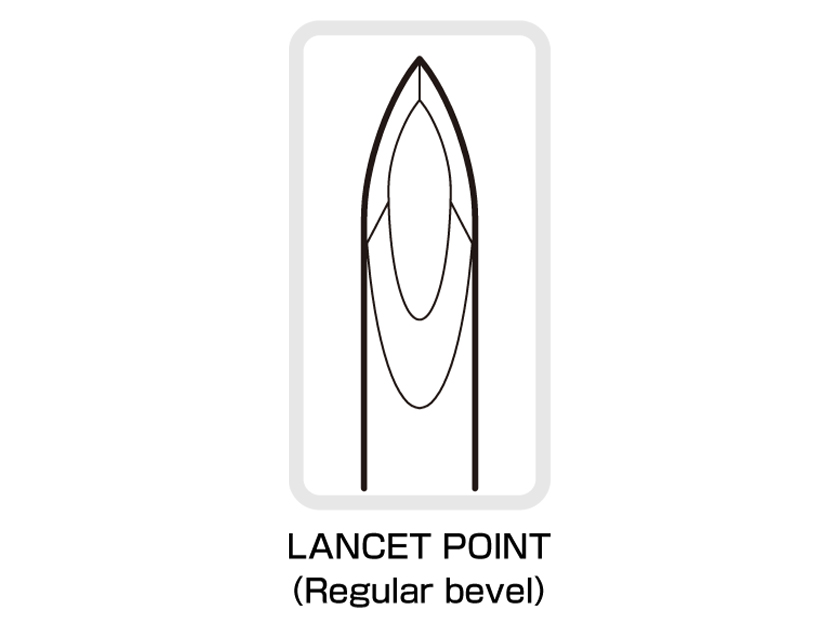
LANCET POINT
(Regular bevel)
This is the shape of the needle tip with a small second bevel formed on either side of the bevel surface to reduce resistance during puncture.
It is the basic shape of injection needles and other general needles.
The LANCET point used especially for hypodermic injection is called a regular bevel, which has a bevel angle of 12° to 14°.
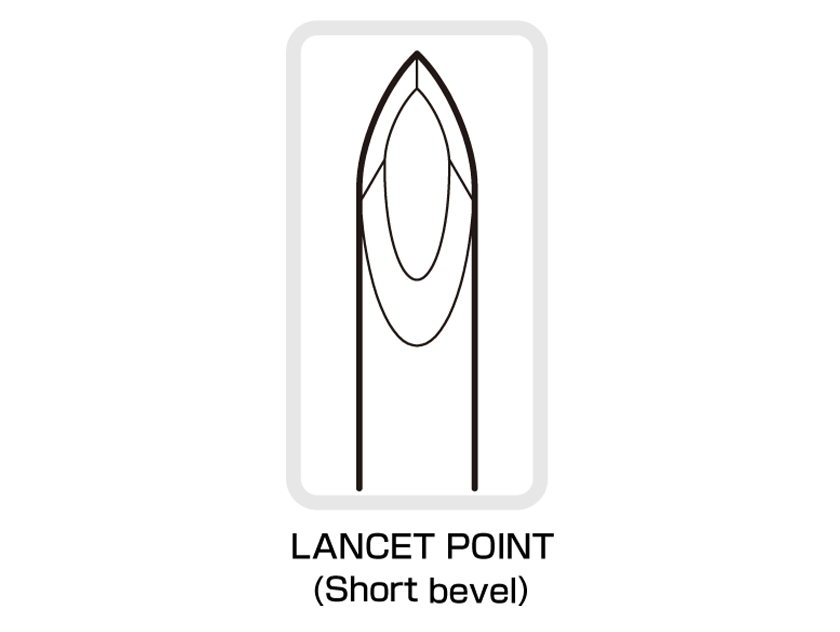
LANCET POINT
(Short bevel)
The lancet point (short bevel) has a shorter blade length than the lancet point (regular bevel) to reduce side effects such as tissue damage.
The blade angle is steep, ranging from 18° to 20°, and the resistance during puncture is high and the sharpness is dull.
It is mainly used for venipuncture, blood sampling, and other procedures that may excessively damage blood vessels.
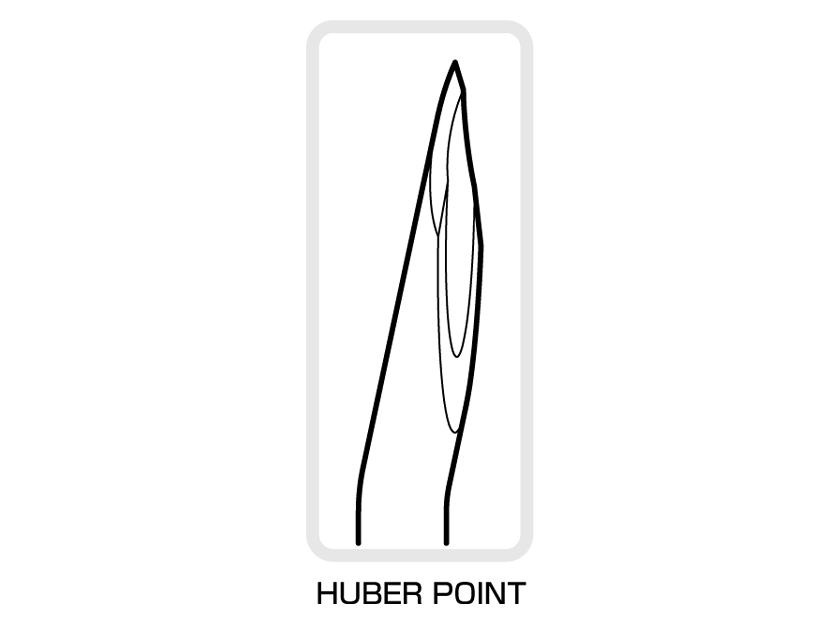
HUBER POINT
The HUBER point is a needle with the tip bent toward the bevel surface.
It was developed by Dr. Robert Huber for hypodermic injection.
Currently, it is widely used as a needle for injecting drugs into a port implanted under the skin (port needle) for its distinctive shape.
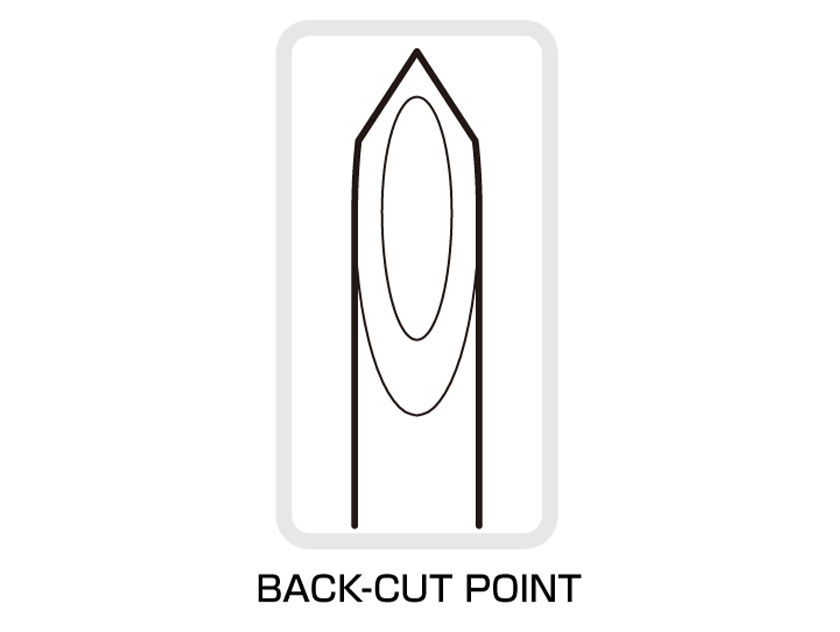
BACK-CUT POINT
It has a small cutting edge on the back side of the bevel face. It is called “ura-tori (back sharpening)” , and is also called “V-cut point” because it has a unique “peak” (protrusion) when viewed from the bevel face.
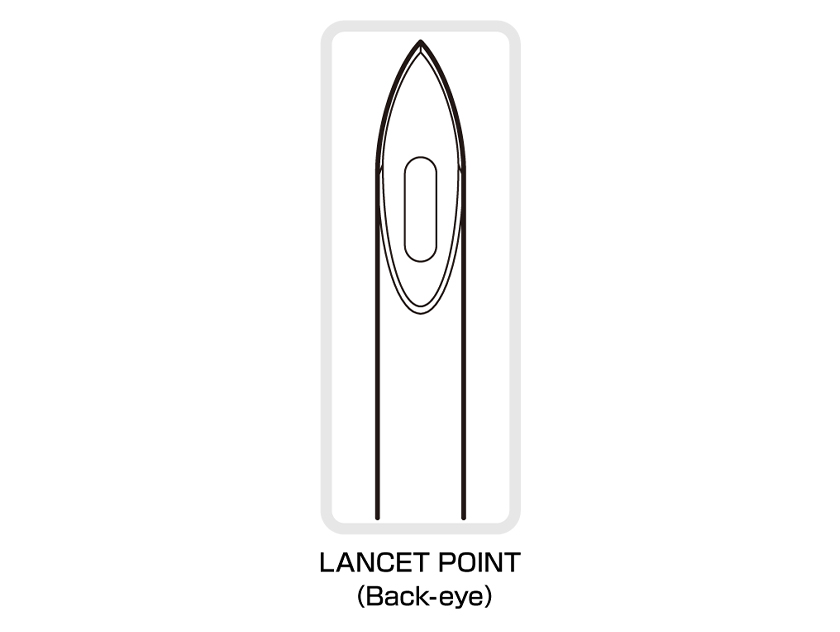
LANCET POINT(BACK-EYE)
It has a hole processed on the back side of the lancet point. This unique hole was developed for arteriovenous fistula (AVF) for hemodialysis. The hole on the back reduces the internal pressure of the vessel wall, preventing vessel constriction and damage to the red blood cells.
* Please inquire at us for the product.
Back to products lineup page
